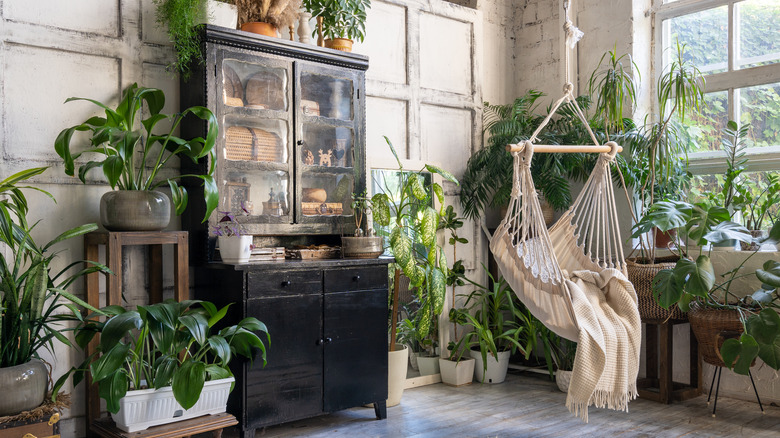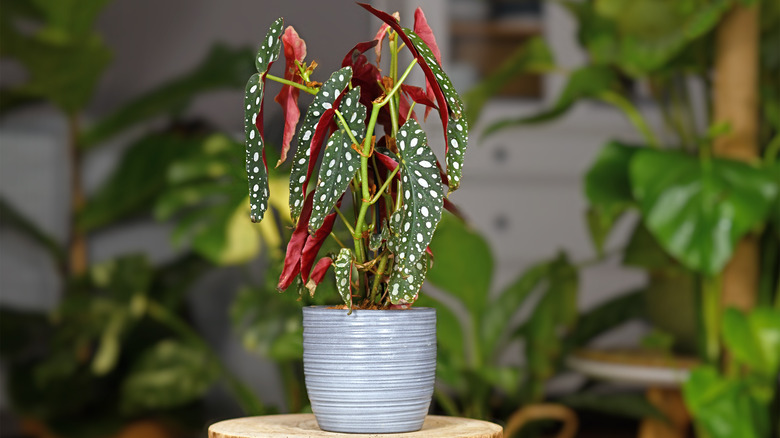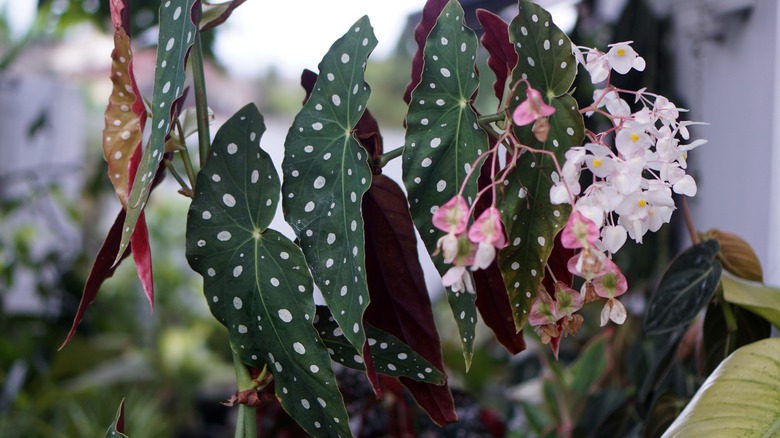Add A Touch Of Whimsy To Your Home With This Cute Polka Dot Houseplant
Who can resist polka dots? Whether you decide to decorate your whole home with polka dots or just have one or two spotted statement pieces, polka dots can add a cheerful and whimsical touch to your living space. The adorable pattern isn't just for fabrics and art, either. Your plants can even get in on the fun. The polka dot begonia (Begonia maculata) is an easy-to-care-for houseplant whose spotted leaves are almost too cute to believe.
While you may associate begonias with the bedding plants that are often grown as summer annuals in cold regions, the genus is surprisingly large and diverse. In addition to the tuberous and wax begonias often used in gardens and hanging baskets, there are also many other types, including cane begonias. Polka dot begonias are a type of cane begonia, also sometimes called angel wing begonias in reference to their beautiful leaf shapes. Native to Brazil, they are only hardy in zones 10 through 12, but these begonias make excellent easy-to-grow houseplants as well.
Caring for polka dot begonias
As polka dot begonias are native to the understory of tropical rainforests, they grow best with bright but indirect light and at least 45% humidity or higher. These begonias generally thrive at room temperature and prefer temperatures between 65 and 80 degrees Fahrenheit. Begonias grow best in well-draining and loamy soil with a neutral pH and should be watered weekly or when the top 2 inches of soil are dry. These plants can be damaged by both underwatering and overwatering, so ensure you always provide the right amount of water.
Polka dot begonias also benefit from monthly fertilizing during the spring and summer. Be sure to water the plant before fertilizing to avoid fertilizer injuries. You can use an all-purpose fertilizer designed for indoor plants. A fertilizer with more nitrogen will encourage the plant's distinctive spotted leaves to grow, while one with lower nitrogen and more phosphorus can encourage flowering. When well cared for, polka dot begonias can grow over 4 feet tall indoors.
Encouraging flowering and preventing disease in polka dot begonias
While polka dot begonias are grown primarily for their charming leaf patterns, they can also produce small clusters of pink or white flowers if conditions are right. If your begonia isn't flowering, increasing the light levels may help. However, introduce brighter light conditions slowly, as polka dot begonias can suffer from leaf burn in intense lighting.
While polka dot begonias are generally easy to care for, like many other begonias, they can suffer from powdery mildew, especially in high heat and high humidity. Removing infected leaves, lowering the humidity, and increasing air circulation should help the plant recover, as powdery mildew is seldom deadly. Root rot can also be a serious concern with begonias, so avoid overwatering your plant to ensure good root health. While you may be able to save your plant if you identify and deal with root rot early, if the roots are too damaged, root rot can be fatal. Also keep in mind that this plant is toxic to animals and humans alike, so keep it away from children and pets.


